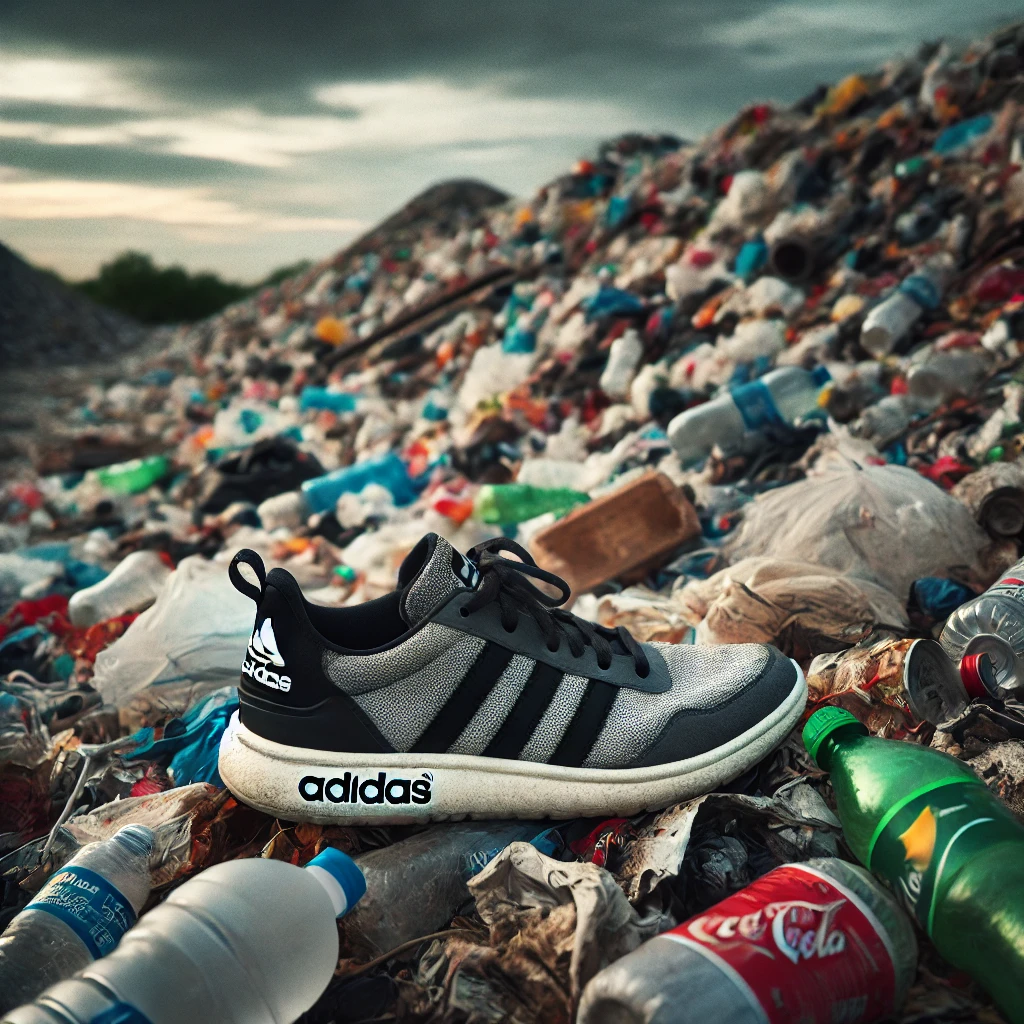Adidas is recognized globally as one of the most proactive brands in embedding sustainability into its core operations, from product innovation to supply chain management. The company’s 2023 Sustainability Report reinforces its commitment to decarbonization, circular product design, and social responsibility across all stages of production. Notably, Adidas has aligned its environmental strategy with the Science Based Targets initiative (SBTi) and the United Nations Sustainable Development Goals (UN SDGs), making bold strides in climate action and ethical manufacturing.
Sustainability Strategy and Goals
Adidas’ holistic sustainability roadmap addresses environmental, social, and governance (ESG) priorities, with clear goals outlined through 2025 and 2030. The strategy is driven by climate neutrality, sustainable sourcing, biodiversity preservation, and technological innovation.
Net Zero and Carbon Emissions
Adidas aims for climate neutrality in its own operations by 2025 and across its full value chain by 2050. By 2030, the company seeks a 30% absolute reduction in GHG emissions compared to 2017 levels.
- Scope 1 emissions in 2023: 21,779 tons CO₂e
- Scope 2 emissions (market-based): 142,457 tons CO₂e
- Scope 3 emissions: 5,894,811 tons CO₂e (down from 7,635,784 in 2022)
- Overall emissions per product declined by 3% in 2023
- Absolute GHG emissions dropped by 24% in 2023
https://report.adidas-group.com/2023/en/group-management-report-our-company/sustainability/environmental-impacts.html
Water Stewardship
Water reduction targets focus on both Adidas’ direct operations and suppliers:
- 15% water intensity reduction in own operations by 2025
- 40% water usage reduction at Tier 2 suppliers compared to 2017 levels
- Adoption of ZDHC (Zero Discharge of Hazardous Chemicals) standards in wastewater management
https://report.adidas-group.com/2023/en/group-management-report-our-company/sustainability/environmental-impacts.html
Regenerative Agriculture
Adidas is transitioning toward regenerative and bio-based inputs through partnerships with material innovation leaders:
- Collaborating with Infinited Fiber, Spinnova, and Pond to develop plant- and cellulose-based textiles
- Targeting commercial-scale integration of regenerative materials by 2025
https://sustainabilitymag.com/sustainability/how-adidas-is-innovating-to-make-sportswear-more-sustainable
Deforestation and Biodiversity
Adidas is working to eliminate deforestation from its leather supply chain by 2030:
- Ongoing audits of tanneries under the Leather Working Group (LWG) certification
- Replaced animal-based leather in select collections with mycelium and recycled synthetics
https://report.adidas-group.com/2023/en/group-management-report-our-company/sustainability/environmental-impacts.html
Packaging and Circular Economy
The company is a front-runner in sustainable design and circularity:
- Goal: 90% of products to be “sustainable” by 2025, made with recycled or natural materials
- Expanded FUTURECRAFT.LOOP—its 100% recyclable running shoe—to pilot reuse cycles
- Replaced all single-use plastic in global offices and retail by end of 2021
https://report.adidas-group.com/2023/en/group-management-report-our-company/sustainability/environmental-impacts.html
Human Rights and Responsible Sourcing
The Social and Environmental Affairs (SEA) team independently audits suppliers on labor practices and environmental compliance:
- 804 independent supplier audits conducted in 2023
- 92% of suppliers met or exceeded labor rights and occupational safety standards
https://report.adidas-group.com/2023/en/group-management-report-our-company/sustainability/rooted-in-our-purpose.html
Nutrition and Health
Though not a food company, Adidas incorporates wellness and physical health into community programs, aligning with UN SDG 3 (Good Health and Well-being):
- Sponsored over 500 grassroots sport programs in 2023
- Initiatives focus on movement access in underserved communities
https://report.adidas-group.com/2023/en/group-management-report-our-company/sustainability/rooted-in-our-purpose.html
Community and Social Impact
Adidas launched “Move for the Planet” to promote climate awareness through sport:
- In 2023, Adidas funded 34 sports projects focused on sustainability
- Collaborated with Common Goal to channel sports-based education into climate resilience
https://report.adidas-group.com/2023/en/group-management-report-our-company/sustainability/environmental-impacts.html
Governance and Transparency
Adidas adheres to rigorous ESG disclosure frameworks:
- Reports to GRI, SASB, and CDP
- Achieved an S&P Global ESG Evaluation Score of 85, ranking 6th globally in the entire S&P Rating Universe
https://www.adidas-group.com/en/media/press-releases/adidas-awarded-strong-esg-rating-by-sandp-for-outstanding-sustainability-performance
Technology and Innovation
Adidas invests in material innovation and climate tech:
- FUTURECRAFT.FOOTPRINT: a low-carbon shoe made in partnership with Allbirds (2.94 kg CO₂e per pair)
- Implementing AI-powered supply chain monitoring to reduce overproduction
- Exploring blockchain-based traceability for cotton and recycled content
https://sustainabilitymag.com/sustainability/how-adidas-is-innovating-to-make-sportswear-more-sustainable
Global Partnerships and Advocacy
Adidas supports and co-signs multiple climate and sustainability charters:
- Founding member of UN Fashion Industry Charter for Climate Action
- Member of The Fashion Pact and Sustainable Apparel Coalition
https://report.adidas-group.com/2023/en/group-management-report-our-company/sustainability/rooted-in-our-purpose.html
Key Sustainability Innovations and Technologies
Adidas has made major progress through circular innovation and climate tech:
- Parley for the Oceans: Over 30 million shoes produced using ocean plastic since 2015
- FUTURECRAFT.LOOP: Designed for infinite recycling; phase two testing underway
- Spinnova: Fiber technology using 99% less water than cotton; pilot lines launched in 2023
https://sustainabilitymag.com/sustainability/how-adidas-is-innovating-to-make-sportswear-more-sustainable
https://report.adidas-group.com/2023/en/group-management-report-our-company/sustainability/environmental-impacts.html
Measurable Impacts
Adidas’ 2023 ESG report details the following measurable outcomes:
- GHG emissions: 24% YoY reduction in absolute emissions
- Product sustainability: 7 out of 10 products made with sustainable materials
- Waste reduction: 94% of production waste diverted from landfill in key suppliers
- Energy mix: 100% renewable electricity used in own operations across North America and Europe
https://report.adidas-group.com/2023/en/group-management-report-our-company/sustainability/environmental-impacts.html
Challenges and Areas for Improvement
Despite significant achievements, Adidas faces ongoing challenges:
- Scope 3 emissions remain the largest part of the carbon footprint and are complex to manage across outsourced supply chains
- Sourcing traceability for natural fibers remains difficult at scale
- Overreliance on synthetics, even recycled, presents long-term circularity limitations
https://report.adidas-group.com/2023/en/group-management-report-our-company/sustainability/environmental-impacts.html
Future Plans and Long-Term Goals
Looking ahead to 2030 and 2050, Adidas plans to:
- Scale closed-loop systems and expand take-back programs
- Convert over 50% of material sourcing to regenerative or bio-based alternatives by 2030
- Ensure climate-neutral logistics and packaging systems by 2040
- Embed digital product passports for transparency and end-of-life tracking
https://report.adidas-group.com/2023/en/group-management-report-our-company/sustainability/environmental-impacts.html
Comparisons to Industry Competitors
Compared to peers like Nike and Puma:
- Adidas leads in transparent reporting and circular product development
- Nike surpasses Adidas in recycled polyester adoption but trails in scope 1 and 2 emission reductions
- Puma’s Forever Better initiative is strong on materials but lacks Adidas’ innovation edge
Nike: https://purpose.nike.com/sustainability
Puma: https://about.puma.com/en/sustainability/reporting
Our Thoughts
Adidas has matured into a benchmark for sustainability in the global apparel sector. With robust emissions reductions, pioneering circular product launches, and community-led climate engagement, the company shows that sustainability and scale are not mutually exclusive. However, addressing Scope 3 emissions and improving traceability of regenerative inputs will be essential for Adidas to maintain leadership into the next decade. Other brands should take note of Adidas’ integration of ESG across innovation, governance, and storytelling—showing how purpose can align with performance.






